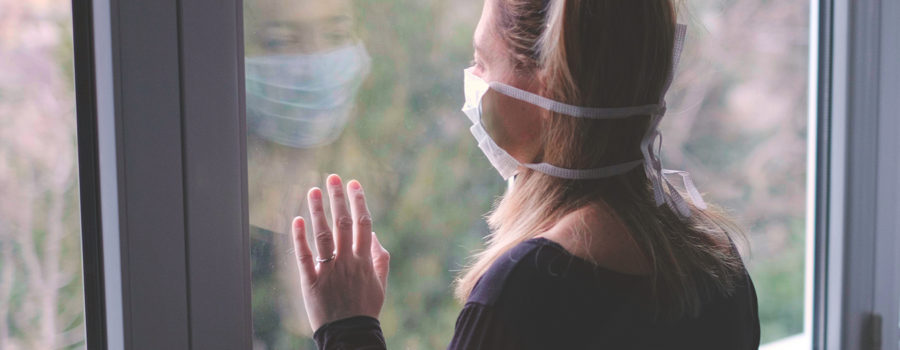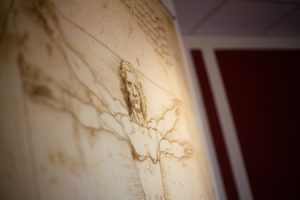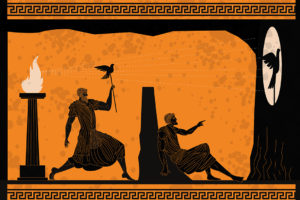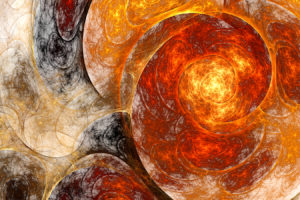April | MAHVALOUS BUBBLES & BAUBLES
Article: Embodying Artful Conversation
By Tricia Stewart Shiu
“Earth Shadow” – Deuter

Social distancing has become a global practice. However, a unique by-product has arisen from #StayingHome
— communication is changing.
In fact, people have found unique, clever and, yes, even artful ways of expressing their feelings for loved ones, communicating with coworkers, and even voicing their opinions. But, most of all, everyone is being forced to slow down and take a look at themselves and maybe even have a conversation, or two.
It is the dawning of a new age — an Aquarian Communication Renaissance, if you will. And from this catastrophic, horrific, terrifying pandemic, humans are rediscovering the art of conversation.
ARTISTIC ALLEGORY | LE MOT JUSTE
For some, this art form was born out of necessity. Being squeezed into tight quarters with loved ones can create a pressure like no other. In fact, it might not be surprising for you, if the art of conversation became the art of talking to oneself.
Cue inner monologue:
Is there a quorum?
Do I hear a second?
Yes?
The “ayes” have it.
Need I say more?

“Small talk is the biggest talk we do.” – Susan RoAne
With all that pressure, it’s not at all surprising that many notable artistic pieces, ingenious inventions, life-saving cures and epic ideas were birthed during global historical hardships.
It has been said, that Shakespeare wrote “King Lear,” during the plague and, according to “The Guardian,” it is, “Not by any means impossible: we know the play was acted in front of King James I on Boxing Day 1606, the first performance on record, and it’s a decent bet that it was scripted that year or the year before.”
Moreover, in times of global duress and disease, art has flourished. “Plague in Art: 10 Paintings You Should Know in the Times of Coronavirus,” profiles notable works of art, which were born from the era’s hardships. The art ranges from a 14th Monastery Abbott’s creation, “Tournai Citizens Burying the Dead During the Black Death” to a 1919 Edvard Munch painting, “Edvard Munch, Self-Portrait after Spanish Influenza,” to a 1989 creation by Keith Haring, “Ignorance=Fear,” which was created after the AIDs epidemic.
Boredom and/or isolation is the birthplace for a prolific and unique kind of creativity. Why wouldn’t conversation be one of them?
Schools have changed the way they converse. As schools rush to reconfigure their student’s curriculum, according to NPR, many have moved their courses online, made mobile-friendly options for those who were stuck at home without laptops, or who may have had to cancel travel, supporting sequestered overseas students, and generally enfolding an open mindset to the ever-changing landscape of the pandemic.
 Museums have changed the way they converse. Many museums have created virtual tours. Visitors can visit the Mona Lisa at the Louvre, the architectural genius of the Guggenheim or The J. Paul Getty Museum which, “has two online exhibits— Heaven, Hell, and Dying Well and Eat, Drink, and Be Merry —in addition to more than 15,000 pieces in an online collection and a virtual look at the grounds.”
Museums have changed the way they converse. Many museums have created virtual tours. Visitors can visit the Mona Lisa at the Louvre, the architectural genius of the Guggenheim or The J. Paul Getty Museum which, “has two online exhibits— Heaven, Hell, and Dying Well and Eat, Drink, and Be Merry —in addition to more than 15,000 pieces in an online collection and a virtual look at the grounds.”
Entertainers have changed the way they converse. Choirs have gone from pop up to virtual, such as Choir! Choir! Choir!, which has been hosting “Social Distan-Sing-a-longs” on Facebook and YouTube, for free. Famous musicians like Elton John, John Legend, Coldplay and Keith Urban, are hosting Live Stream and Virtual concerts from their homes.
All of these new and virtual connections, are offering a glimmer of hope during a decidedly dark period of our history. Communing and communicating are, after all, helpful during intensely challenging times.
The Art of Conversation is, hopefully, not just about communication now, but about creating a deep and lasting understanding of the world and all of our connections in it.
Perhaps, by leveraging the pressure of isolation and boredom and using technology to connect, we might just find that different, surprising and artful way of conveying our emotions to those around us, who need it most. No matter how we decide to behave during this unusual time of social distancing, one thing is for sure, we will never be the same.
Isn’t that right?
I suppose, it is.
I told you it was.
Don’t tell me what to do…
Oh well, maybe not.





